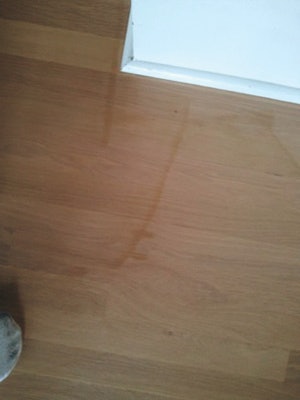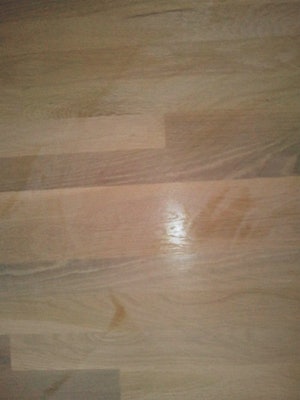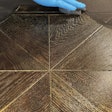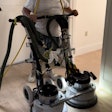


We hardwood floor guys are a little bit of a different breed. We're not afraid to try something different to get the job done and make the homeowner happy. Sometimes you gotta bend the rules to pull off a job. When you bend the rules, it may work, but when it doesn't go as planned, the bite really stings.
Here is one of my latest—and most costly pains in the rear—hardwood floor lessons learned. I had a white oak floor that received water damage, so the kitchen had to be torn out and replaced. The original floor was stained a taupe color with a Swedish finish (conversion varnish). So I bid the job with three finish options with the taupe stain: a conversion varnish, a single-component waterborne finish or a two-component waterborne finish. The homeowner chose the single-component waterborne finish, and we struck a deal.
I have had great success with that single-component finish and white oak, so I wasn't worried about the dreaded tannin pull. I also in the past stained a maple floor with that taupe stain and coated it with that single-component finish—which is from a different manufacturer than the stain—and it came out looking great, so I wasn't concerned about the compatibility.
Taupe is a tricky stain to start with, but I proceeded without a second thought. I sanded the floor, water-popped it, let it dry and stained it. Now, here is where I began to lose it. Heavily pigmented stains require longer dry times (wish they would put that part in bigger letters) but I, like most guys, was in a time crunch. So, with the confidence of having had success with these products before, I gave the stain about a 36-hour dry time (longer than I usually do, but my rep from that company keeps warning me about following recommended dry times). I put the sealer down and headed to work on another job while I waited for it to dry. I came back to find the dreaded tannin pull marks all over.
While attending NWFA schools and events at my distributors, I get to meet and talk with the different finish reps. So at this point I got on the phone with them to try to figure out what went wrong and how to fix it. My rep from the stain company informed me that white oak, pastel stains and waterborne finish are not a successful combination. Next I talked with the finish company rep, who told me I didn't let the stain dry adequately, and that is why I had a finish reaction.
The homeowner really wanted that waterborne finish, and so I figured that it was just my fault and that I didn't give the stain enough time to dry. So, I resanded the floor and stained it, only this time I cranked the heat up to 75 degrees Fahrenheit (yes, in June in Washington State you still have to turn the heat on) and let it dry for a full 72 hours. And, going against my gut instincts, I coated the floor again with the waterborne finish ... and ended up with the same exact failure.
So, now I was sunk. I gave the homeowner his money back, covered his hotel and gave him the option of staining and going with the Swedish finish (from the same manufacturer as the stain) or going with the natural and waterborne finish. He chose the natural, and the floor looks great.
Lesson learned: white oak, pastel stain, and waterborne finish is a bad combination. No product failed on its own, but all three in combination gave me a recipe for disaster. Next time I try something out of the ordinary, I think I'll find a couple of people who have had good success with using the same combination I want to use.
This is yet another reason why networking and shooting the breeze with others in the trade is a good idea-it helps you by finding out what not to do and what can work in a pinch. I highly recommend attending NWFA and finish manufacturer schools, as well as the NWFA Expo. This is a great way to network with others in the trade, and you don't have to worry about competition, because there are guys from all over the country. Another good way to meet the reps is to attend distributor events—sure it takes time, but it could save you money in the long run if you know who to call when you have questions.
Also, learn to trust your finish reps. Most of the ones I have met have my best interests in mind, because if I succeed, they succeed. If they advise against it, it's a good idea to heed that advice.

































